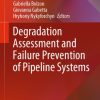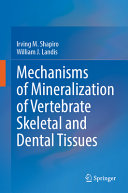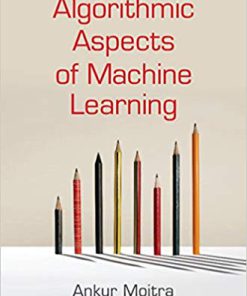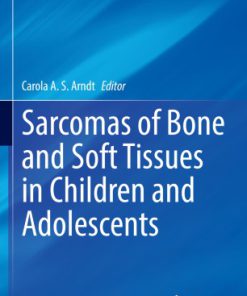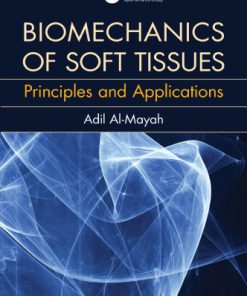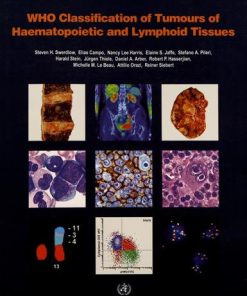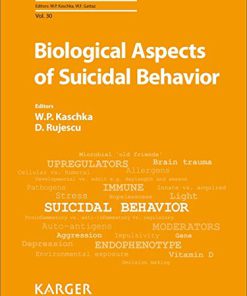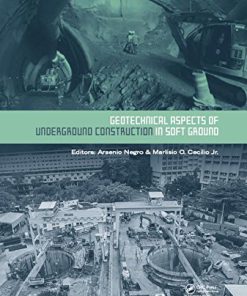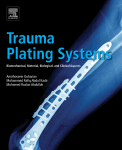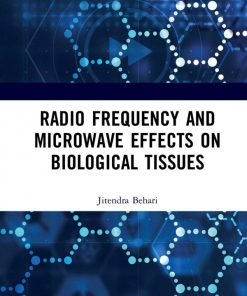Biomechanical aspects of soft tissues 1st Edition by Benjamin Loret, Fernando Manuel Fernandes Simões 149875239X 9781498752398
$50.00 Original price was: $50.00.$25.00Current price is: $25.00.
Biomechanical aspects of soft tissues 1st Edition by Benjamin Loret, Fernando Manuel Fernandes Simões – Ebook PDF Instant Download/DeliveryISBN: 149875239X, 9781498752398
Full download Biomechanical aspects of soft tissues 1st Edition after payment.
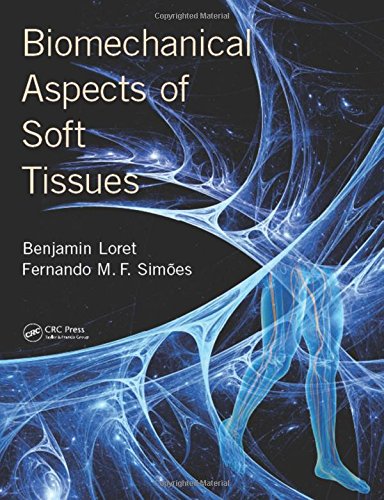
Product details:
ISBN-10 : 149875239X
ISBN-13 : 9781498752398
Author: Benjamin Loret, Fernando Manuel Fernandes Simões
Biomechanics applies the laws and techniques of mechanics in the study of biological systems and related phenomena. Biomechanics uses mathematical and computational tools such as model construction of musclo-skeletal system, body fluid circulation, to aid medical diagnosis, therapeutics and surgery planning, designing of prostheses and implants or in tissue engineering. Present book targets specific topics pertaining to the biomechanics of soft tissues. Subjects addressed includes solids and multi-species mixtures as open systems: a continuum mechanics perspective; electro-chemo-mechanical couplings: tissues with a fixed electric charge and growth of biological tissues.
Biomechanical aspects of soft tissues 1st Table of contents:
1 Biomechanical topics in soft tissues
1.1 Introduction
1.2 Diffusion, convection, osmosis: toward wearable artificial kidneys
1.3 Issues in drug delivery
1.4 Macroscopic models of tissues, interstitium and membranes
1.5 Energy couplings, passive and active transports
1.6 More general direct and reverse couplings
1.7 Tissue engineering redirected to tumor tissue exploration
1.8 From mechanics to biomechanics
1.9 Mechanisms of injury of the knee, fracture mechanics
1.10 Water and solid constituents of soft tissues
I Solids and multi-species mixtures as open systems: a continuum mechanics perspective
2 Elements of continuum mechanics
2.1 Algebraic relations and algebraic operators
2.2 Characteristic polynomial, eigenvalues and eigenvectors
2.3 A few useful tensorial relations
2.4 The differential operators of continuum mechanics
2.5 Measures of strain
2.6 Transports between reference and current configurations
2.7 Time derivatives and Reynolds theorems
2.8 Work-conjugate stress-strain pairs
2.9 Small upon large
2.10 Kinematical constraints and reaction stresses
2.11 Invariance, objectivity, isotropy
Exercises on Chapter 2
3 Thermodynamic properties of fluids
3.1 Basic thermodynamic definitions
3.2 Phase change
3.3 Thermodynamic functions of fluids
3.4 Laplace’s law of mechanical equilibrium at the interface between two immiscible fluids
3.5 Henry’s law and Raoult’s law of chemical equilibrium between a liquid and a gas
3.6 Composition of fluids in plasma, interstitium, cell
4 Multi-species mixtures as thermodynamically open systems
4.1 The thermodynamically open system
4.2 Chemomechanical behavior and growth of soft tissues
4.3 General form of balance equations
4.4 Balance of mass
4.5 Balance of momentum
4.6 Balance of energy
4.7 Balance of entropy and Clausius-Duhem inequality
4.8 Dissipation mechanisms
4.9 General constitutive principles
Appendices of Chapter 4
5 Anisotropic and conewise elasticity
5.1 Hypoelasticity, elasticity and hyperelasticity
5.2 Anisotropic linear elasticity
5.3 Spectral analysis of the elastic matrix
5.4 Fiber-reinforced materials: extension-contraction response
Exercises on Chapter 5
6 Hyperelasticity, a purely mechanical point of view
6.1 Restrictions to the strain energy function
6.2 Properties of constitutive functions and partial differential equations
6.3 Total potential energy
6.4 Isotropic hyperelasticity
6.5 Anisotropic hyperelasticity and Fung’s strain energy
6.6 Elastic potentials with the elastic-growth multiplicative decomposition
6.7 Return to the conewise response in presence of fibers
6.8 Elasticity and workless constitutive stress
6.9 Use of right and left Cauchy-Green tensors
Exercises on Chapter 6
7 Poroelasticity with a single porosity
7.1 Geometrical, kinematical and mechanical descriptors
7.2 Elements of mixture theory: the level/scale of the species
7.3 Anisotropic poroelasticity: a composite material format
7.4 Anisotropic poroelasticity: drained and undrained properties
7.5 Unconfined compression of a poroelastic cylinder
8 Viscoelasticity and poro-viscoelasticity
8.1 Viscoelasticity, poroelasticity and poro-viscoelasticity
8.2 Intrinsic time dependent behavior of collagen fibrils
8.3 Complex modulus
8.4 Relaxation spectrum
8.5 The quasi-linear viscoelasticity QLV model of Fung
8.6 Overall viscoelastic properties: ECM and a contractile cell
8.7 An electrical analogy applied to the corneal endothelium
8.8 Fluid infusion in a viscoelastic polymer gel
8.9 Confined compression of a viscoelastic polymer gel
8.10 Compression of a poroelastic layer: displacement control
8.11 Visco-hyperelasticity and other memory effects
Exercises on Chapter 8
9 Thermoelasticity and thermo-poroelasticity
9.1 Thermomechanical properties of elastic solids
9.2 Thermoelastic heat, stored energy and dissipated energy
9.3 Anisotropic thermo-poroelasticity : mechanics, transport, energy
9.4 Generalized compatibility conditions for the stress
9.5 Heating a thermo-poroelastic medium
Exercises on Chapter 9
10 Transfers of mass, momentum, and energy
10.1 Summary of balance equations
10.2 Intercompartment mass transfers
10.3 Momentum supply in a poroelastic context
10.4 The bioheat equation
10.5 Mass and energy transfers between a liquid and a solid
10.6 A porous medium with two porosities and three temperatures
10.7 A porous medium with a single porosity and two temperatures
10.8 Interfacial transfer coefficients and specific surface areas
10.9 The coefficients of transfer: two scale derivation
11 Waves in thermoelastic solids and saturated porous media
11.1 Basic definitions
11.2 Waves in elastic solids
11.3 Acceleration waves in thermoelastic solids
11.4 Acceleration waves and acoustic waves in fluids
11.5 Acceleration waves in saturated porous media
11.6 Propagation of acceleration waves in saturated porous media
11.7 Plane motions and Helmholtz potentials in poroelasticity
11.8 Silent poroelastic boundaries
11.9 Surface waves in a saturated porous half-plane
11.10 First order waves in saturated porous media
Exercises on Chapter 11
II Electro-chemomechanical couplings in tissues with a fixed electrical charge
12 Directional averaging for fiber-reinforced tissues
12.1 Directional analysis
12.2 A simple fiber model for the collagen network
12.3 Directional models of tissues
12.4 The mechanical response of individual fibers
12.5 Fabric tensors
12.6 Spatial homogenization over cells and ECM
13 Electro-chemomechanical couplings
13.1 Chemomechanical couplings in engineering and biology
13.2 Molar volumes, electrostriction
13.3 Electrokinetic processes
13.4 Nanoscopic aspects
13.5 Hydration, hydrolysis, complexation and solubility
13.6 Some basic notions of electrostatics
13.7 Semi-permeable membrane and osmotic effect
13.8 Reverse or Inverse osmosis
13.9 Electrical repulsion and electrical shielding
13.10 The pore composition in materials with fixed charge
13.11 The heart muscle and cell electrophysiology
13.12 Reverse couplings
13.13 A partially coupled chemo-poroelastic model
Exercises on Chapter 13
14 Chemomechanical couplings in articular cartilages
14.1 Overview
14.2 Histological aspects of articular cartilages
14.3 Pathologies, osteoarthritis, rheumatoid arthritis
14.4 A brief review of modeling aspects
14.5 Interpretation of laboratory experiments
14.6 Partition of the tissue into phases
14.7 The constitutive structure: deformation, mass transfer, diffusion
14.8 Chemoelastic energy of the tissue
14.9 Features of the constitutive framework
14.10 Remarks on constitutive frameworks and constraints
Exercises on Chapter 14
15 Passive transport in the interstitium and circulation
15.1 Diffusion as a mode of passive transport
15.2 Coupled flows
15.3 Propagation, diffusion, convection
15.4 Physico-chemical processes involving diffusion, convection and reaction
15.5 Diffusion versus convection
15.6 Newtonian viscous fluids and Reynolds number
15.7 Hydraulic conductivity
15.8 The steps of drug delivery, extravasation, transport in the interstitium
15.9 Blood circulation
15.10 Mechanics of vessels
15.11 Transport of oxygen and carbon dioxide in blood
15.12 Basics of enzymatic kinetics
15.13 Acid-base equilibrium
Exercises on Chapter 15
16 Coupled transports in tissues with a fixed electrical charge
16.1 Macroscopic transports in tissues with a fixed charge
16.2 Generalized and coupled diffusion: structure of constitutive equations
16.3 Generalized diffusion: the membrane effect
16.4 Generalized diffusion: ranges of the coefficients and refinements
16.5 Generalized diffusion with thermal effects
Exercises on Chapter 16
17 Effects of the pH on transport and mechanics
17.1 Overview and laboratory observations
17.2 pH agents embedded in the mixture framework
17.3 Acid-base reactions in a thermodynamic framework
17.4 Calcium binding in a thermodynamic framework
17.5 Variation of the fixed electrical charge with pH
17.6 Biochemical composition of articular cartilages
17.7 Concentrations of ions, sites and charges
17.8 Chemical equilibrium at the cartilage-bath interface
17.9 Constitutive equations of generalized diffusion
17.10 Simulations of bath-cartilage equilibria
17.11 Constitutive mechanical framework: effects of pH and calcium binding
17.12 Chemically induced stiffening/softening by fiber recruitment/deactivation
17.13 Mechanical and chemical tests at varying pH
17.14 The limit case of a conewise linear collagen response
17.15 Comments on the mechanical model
18 Finite element analysis of ECM couplings
18.1 Overview of the finite element analysis
18.2 Field and constitutive equations
18.3 Finite element formulation
18.4 Testing setup and material data
18.5 Mechanical and chemical loadings with NaCl
18.6 Cyclic substitution of NaCl and CaCl2
18.7 Improvements of the chemomechanical model
Exercises on Chapter 18
19 Cornea and annulus fibrosus
19.1 Function, structure and composition
19.2 Biomechanical aspects
19.3 Active transport in the endothelium: the cell and organ scales
19.4 Physical data: literature review
19.5 Scattering of light by the corneal stroma and transmittance
19.6 Corneal surgery
19.7 Cornea engineering
19.8 The constitutive framework
19.9 Biochemical composition of stroma
19.10 The fixed electrical charge: negatively charged PGs and chloride binding
19.11 Effects of pH and chloride binding on the fixed charge
19.12 Global constitutive structure: mechanics and transport
19.13 Generalized diffusion in the extrafibrillar phase
19.14 Rest potential and active fluxes at the cell scale
19.15 Coupled diffusion across a membrane and active transport
19.16 Chemomechanical framework including chloride binding
19.17 Constitutive equations of chemo-hyperelasticity
19.18 Boundary value problems
19.19 The purely mechanical contribution: nonlinear elasticity
19.20 Annulus fibrosus: another lamellar tissue with two families of fibers
III Growth of biological tissues
20 Tissue Engineering
20.1 Biomechanical perspectives of tissue engineering
20.2 Basic notions of biochemistry
20.3 Effects of hormones and growth factors
20.4 Cell cultures
20.5 Mechanobiology: experimental data
20.6 Mechanobiology: models of growth of mass
20.7 Growth and structuration of the collagen network
20.8 Use of light for tissue fabrication
20.9 Biochemical and mechanical factors: a synthesis
21 Growth of soft tissues
21.1 Natural growth and tissue engineering
21.2 Residual stresses in elastic solids and material symmetries
21.3 Kinematics of growth
21.4 Constitutive assumptions and restrictions: the growth law
21.5 Internal entropy production for a single solid
21.6 Some models and their thermodynamic structure
21.7 Boundary value problems for elastic-growing solids
21.8 Incompatible strains and residual stresses
Exercises on Chapter 21
22 Elastic-growing solids
22.1 The tools: dissipation, homeostatic domain and convexity
22.2 Relations relative to the intermediate configurations
22.3 Growth law based on quadratic dissipation
22.4 Bounded structure variables via convexity
22.5 A thermodynamically consistent growth law
22.6 Modes of mass deposition and mechanical response
22.7 Constitutive equations for purely elastic solids
22.8 Growth of a bar under unconfined tension/compression
22.9 Growth of a hollow cylinder under internal pressure
Appendices on Chapter 22
23 Elastic-growing mixtures
23.1 Thermodynamically consistent growth laws in a mixture context
23.2 Modes of mass deposition in an elastic-growing mixture
23.3 The fixed charge: electro-chemomechanical couplings
23.4 Growth equations with an evolving microstructure
23.5 Growth equations for proteoglycans
23.6 Summary of constitutive equations and residual
23.7 Growth laws with evolving microstructure: simulations
23.8 Self-healing in engineering materials
24 Solid tumors
24.1 Solid tumors: the recent intrusion of mechanics
24.2 From DNA alteration to metastatic migration
24.3 Oncology and molecular basis of cancer
24.4 Mechanobiology: molecular basis and observations
24.5 Early mathematical models of tumor growth
24.6 Models of transport of fluids, nutrients and drugs
24.7 Mechanical boundary value problems
24.8 Poroelastic mixture models without growth strain
24.9 Poroelastic mixture models with a growth strain
24.10 Methods of imaging transport and mechanical properties
25 Units and physical constants
25.1 Units
25.2 Physical constants
People also search for Biomechanical aspects of soft tissues 1st:
soft tissue biomechanical properties
biomechanics of soft tissues principles and applications
what is soft bone tissue
soft tissue injury from impact
what is soft muscle tissue damage
Tags: Biomechanical aspects, tissues, Benjamin Loret, Fernando Manuel Fernandes Simões
You may also like…
Medicine - Veterinary Medicine
Mechanisms of Mineralization of Vertebrate Skeletal and Dental Tissues 1st Edition Shapiro
Computers - Computer Science
Algorithmic Aspects of Machine Learning 1st Edition Ankur Moitra
Medicine - Oncology
Sarcomas of Bone and Soft Tissues in Children and Adolescents Carola A. S. Arndt
Engineering
Radio Frequency and Microwave Effects on Biological Tissues 1st Edition Jitendra Behari (Author)



